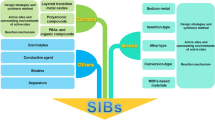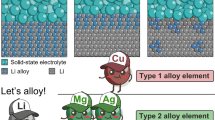Abstract
All-solid-state battery performance is strongly dependent on effective charge transfer at both 1) the interface of the active particles and 2) through the interstitial regions of composite cathode. Design of the composite cathode is further complicated by the necessity to limit the amount of conductor additives in order to attain high energy density. These requirements present a difficult design challenge for the composite cathode. Here we investigate the extent to which the mixing order of the three components in the composite cathode impacts the charge transfer and cell performance. We test a total of 5 mixing protocols and find that the initial discharge capacity and the rate capability varies significantly with mixing order. It is shown that the location of the electron conductive carbon is particularly critical for cell performance due to its limited quantity in the composite cathode. Mixing protocols that concentrate the carbon at the active particle interface lowers the interfacial resistance leading to higher discharge capacity. Mixing protocols that place more carbon in the interstitial regions improves the electron path conductivity and is found to correlate with higher rate capability. Based on these results we demonstrate a mixing protocol that achieves both higher discharge capacity and better rate performance for all-solid-state batteries.








Similar content being viewed by others
References
M. Armand, J.M. Tarascon, Nature 451, 652–657 (2008)
J. Kalhoff, G.G. Esthete, D. Bresser, S. Passerine, ChemSusChem 8, 2154–2175 (2015)
Y. Wang, W.H. Zhong, ChemElectroChem 2, 22–36 (2015)
J.B. Bates, N.J. Dudney, G.R. Gruzalski, R.A. Zuhr, A. Choudhury, C.F. Luck, J.D. Robertson, Solid State Ionics 53, 647–654 (1992)
J.G. Kim, B. Son, S. Mukherjee, N. Schubert, A. Bates, O. Kwon, M.J. Choi, H.Y. Chung, S. Park, J. Power Sources 282, 299–322 (2015)
E. Quartarone, P. Mustarelli, Chem. Soc. Rev. 40, 2525–2540 (2011)
J.L. Souquet, E. Robinel, B. Barrau, M. Ribes, Solid State Ion. 3-4, 317–321 (1981)
J.P. Malugani, G. Robert, Solid State Ionics 1, 519–523 (1980)
A. Hayashi, S. Hama, F. Mizuno, K. Tadanaga, T. Minami, M. Tatsumisago, Solid State Ionics 175, 683–686 (2004)
N. Kamaya, K. Homma, Y. Yamakawa, M. Hirayama, R. Kanno, M. Yonemura, T. Kamiyama, Y. Kato, S. Hama, K. Kawamoto, A. Mitsui, Nat. Mater. 10, 682–686 (2011)
Y. Seino, T. Ota, K. Takada, A. Hayashi, M. Tatsumisago, Energy Environ. Sci. 7, 627–631 (2014)
J. Kim, M. Eom, S. Noh, D. Shin, J. Power Sources 244, 476–481 (2013)
S. Choi, M. Eom, C. Park, S. Son, G. Lee, D. Shin, Ceram. Int. 42, 6738–6742 (2016)
J. Kim, M. Eom, S. Noh, D. Shin, Electron. Mater. Lett. 8, 209–213 (2012)
M. Tatsumisago, S. Hama, A. Hayashi, H. Morimoto, T. Minami, Solid State Ionics 154, 635–640 (2002)
M. Eom, J. Kim, S. Noh, D. Shin, J. Power Sources 284, 44–48 (2015)
J. Kim, M. Kim, S. Noh, G. Lee, D. Shin, Ceram. Int. 42, 2140–2146 (2016)
S. Noh, W.T. Nichols, C. Park, D. Shin, Ceram. Int. 43, 15952–15958 (2017)
S. Noh, J. Kim, M. Eom, D. Shin, Ceram. Int. 39, 8453–8458 (2013)
J. Jamnik, G. Miran, MRS Bull. 34, 942–948 (2009)
A. Sakuda, H. Kitaura, A. Hayashi, K. Tadanaga, M. Tatsumisago, J. Electrochem. Soc. 156, A27–A32 (2009)
Acknowledgements
This work was supported by the Dual Use Technology Program of the Institute of Civil Military Technology Cooperation granted financial resources from the Ministry of Trade, Industry & Energy and Defense Acquisition Program Administration (17-CM-EN-11).
Author information
Authors and Affiliations
Corresponding author
Rights and permissions
About this article
Cite this article
Noh, S., Nichols, W.T., Cho, M. et al. Importance of mixing protocol for enhanced performance of composite cathodes in all-solid-state batteries using sulfide solid electrolyte. J Electroceram 40, 293–299 (2018). https://doi.org/10.1007/s10832-018-0129-y
Received:
Accepted:
Published:
Issue Date:
DOI: https://doi.org/10.1007/s10832-018-0129-y




